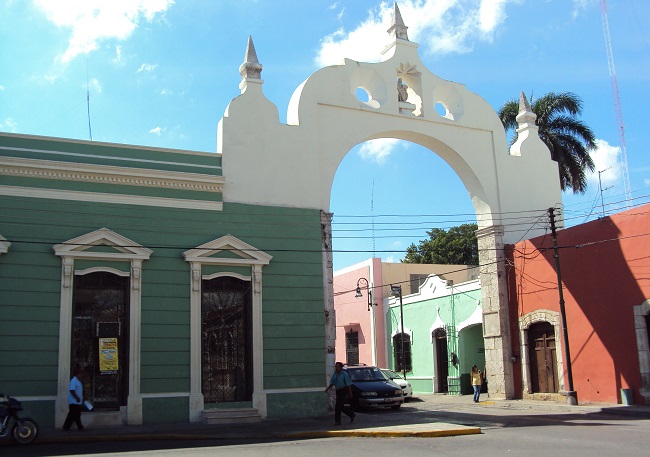International Symposium on Cultural Heritage
“All of us who integrate society formed the faces of Mérida, a city that was committed to the people who were enriched by their diversity of thought and solidarity actions, and the artistic expressions that we as human beings have the right to enjoy”, stated mayor Renán Barrera on Jan 23rd.
During the inauguration of the VII Symposium on Cultural Heritage in Mérida “Merida’s Cultural Expectations“, in the framework of the city’s anniversary, the mayor stressed that cities are the past, but also the future and the engine of development and productivity.
“Our heritage is particularly important when the second largest historic center in the country is registered. In the city there are neighborhoods such as Garcia Ginerés and Colonia Mexico that are classified as areas of municipal cultural heritage, for having elements of the Modern Movement of Nationalist Architecture, ” he said.
In this area of municipal cultural heritage, the Parque de las Américasalso stands out as an architectural landmark.

Parque las Americas (Photp: album.enfemenino.com)
This park was recently remodeled with important restoration works carried out in the acoustic shell, reinforcements in the dome, cleaning of the murals, paintings, sculptures and floors. The general intervention had an investment of five million pesos.
Merida has a Historic Monuments Zone, this was designated by presidential decree in 1982, featuring an area of 8,795 square kilometers of the city. There are 3,906 buildings with historical value built between the sixteenth and nineteenth centuries, and out of those, 21 were destined, at some point in time, to religious worship, among them, the conventional assemblies of Our Lady of Carmen “La Mejorada“, Nuestra Señora de la Concepción , “Monjas” and the Temples of Santa Lucía, San Cristóbal, San Sebastián, El Sagrario, Third Order, Jesus Nazareno, San Juan Bautista, Santiago Apóstol, Santa Ana, Cathedral and the Hermitage of Santa Isabel.
It should be remembered that, among the referred buildings, 47 have been destined for educational purposes and welfare services, or for the use of civilians, among them the museums of the Casa de Montejo, the Canton Palace, the building of San Juan de Dios , University of Yucatán, the Peón Contreras theater, the Peninsular Ateneo, the Cepeda Peraza library, the railway station, the Civil Registry, the old grain market, the Municipal and Government palaces, La Mejorada barracks, the Arco de Dragons , the arch of the bridge and the Arch of San Juan.
The 3,838 buildings feature architectural elements and ornamental details, and in some cases even indigenous labor, making them historic, and representations of the true regional style of Merida.
Barrera Concha said that it is necessary to preserve the legacy that keeps the city’s history alive.

Arco_Del_Barrio_De_San_Juan (Photo: Archive)
-In this framework of the VII Symposium 2019 on Cultural Heritage of Mérida, we are recognizing the right that cities have to build collaborative networks created by themselves, or under the protection of the Agenda 21 for Culture, which encourages an intercultural dialogue for respect and peace without neglecting the past that gave rise to it, ” said the mayor.
“We are all the faces of the city and that is why we must ask ourselves what we are willing to do for her, to maintain it peaceful, sustainable and solidary”, he continued.
“We thank those who collaborated to make this symposium a reality, the Yucatecan Association of Specialists in Restoration and Conservation of the Built Patrimony, AC (Ayerac), the Civil Association Xíimbal K’áax, AC, as well as universities, local and foreign research centers”, Hernán Barrera Concha concluded.
TYT Newsroom with information from yucatan.com.mx

